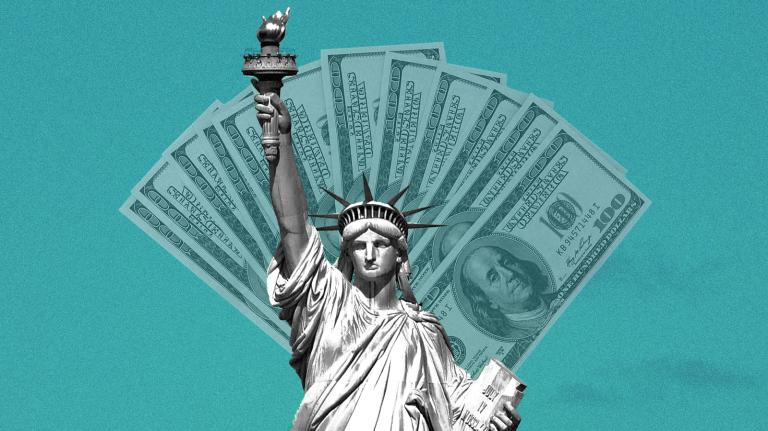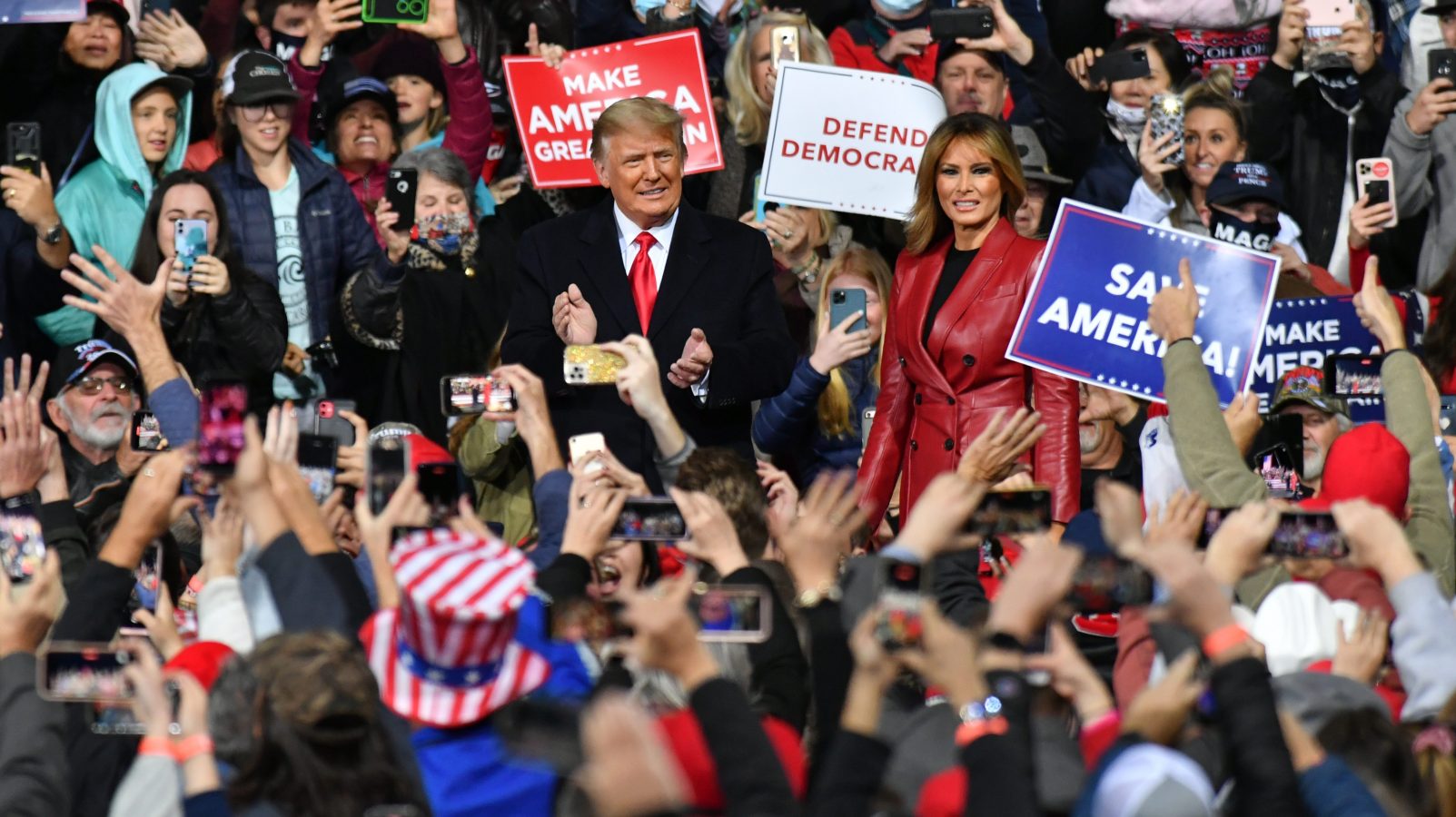As much as this year has been about Black Lives Matter, it is also about something else: This is the year when we really learned that not even white lives matter to most white people.
Little else can explain white people allowing 139,000 of themselves to die from COVID-19 as of late November. That represents 56 percent of all of the Americans who had perished, according to the Centers for Disease Control and Prevention, or CDC. That is enough bodies to fill seven Madison Square Gardens; and the percentage is close to population parity, as 60 percent of Americans are white.
After the pandemic began with a grossly disproportionate death toll among people of color, the percentage of white dead is growing, most searingly in the Midwest. According to CDC data, white people in that region went from accounting for about 35 percent of deaths among people under 65 in June to 50 percent in August. They have gone from about 70 percent of senior deaths back in June to more than 80 percent in August.
Yet not even the spread of COVID-19 into previously spared white communities has been enough to galvanize unified action against the pandemic.
It was not enough on November 3, when a majority of white people voted for the incumbent president whose policies are literally killing them. Exit polls say 61 percent of white men and 55 percent of white women tried to reelect Donald Trump, the same leader who purposely denied his own voters, along with the rest of the nation, his advance knowledge of how deadly the novel coronavirus could be. They voted for a commander-in-chief who, 10 months into the pandemic, has seen to it that the wealthiest country on Earth still has no national strategy to combat the plague. Despite what may be the most lethal form of presidential incompetence in American history, Trump beat President-elect Joe Biden among white voters by 17 percentage points.
The same group voted to take essentially no action on the mounting toll stemming from climate change. From 2017 to 2019, nearly 1,200 Americans were killed annually in climate and weather disasters totaling $154 billion a year, according to the National Oceanic and Atmospheric Administration. The average number of deaths is quadruple that of the 1980s, and the costs of damage represent a roughly-nine-fold increase. And according to dramatic new data in The Lancet medical journal, heat-related mortality for Americans over 65 has nearly doubled in the last two decades, taking a record 19,000 lives in 2018.
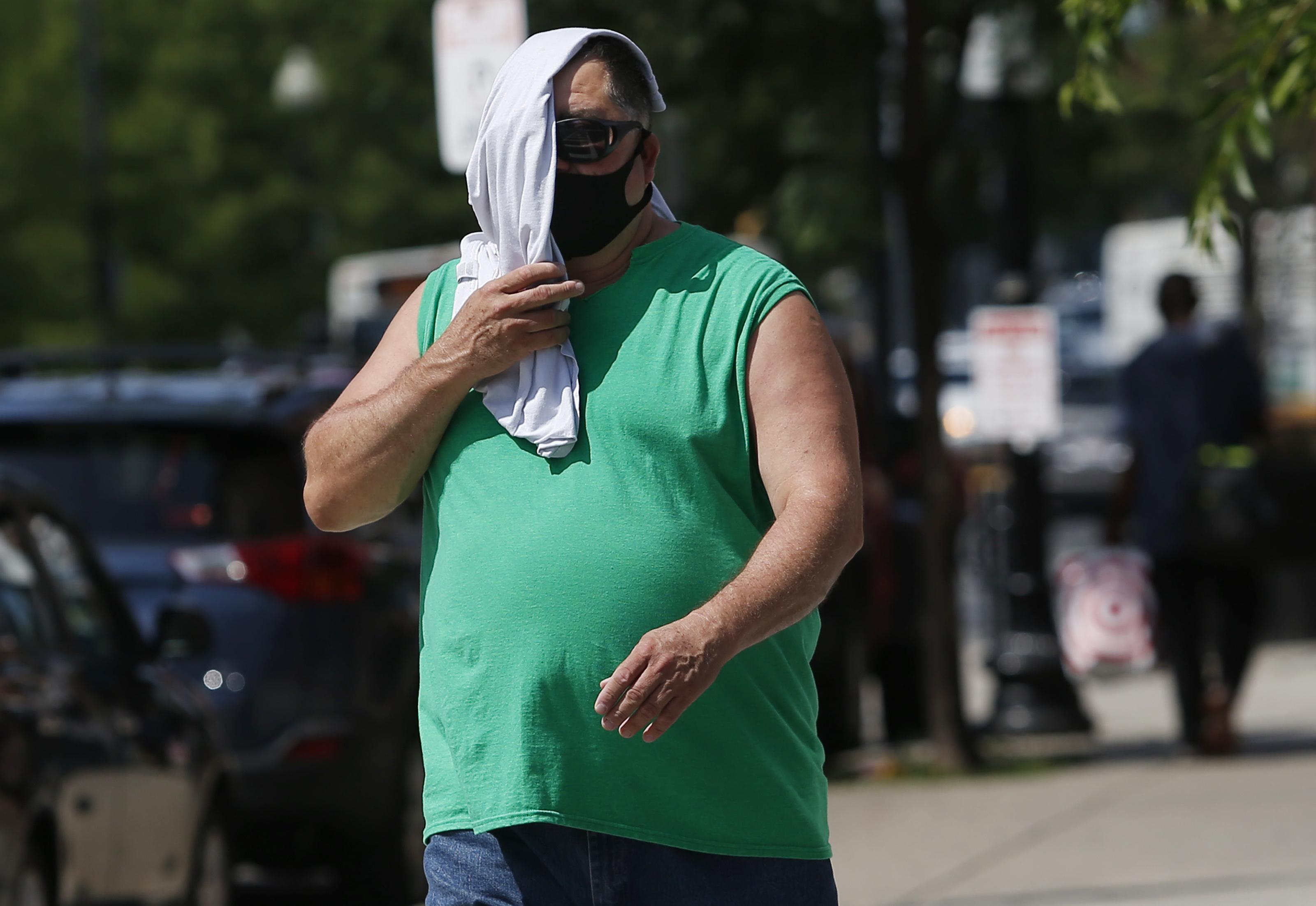
A man covers his head with a shirt to protect from the sun as he walks down the street in East Boston during a heat wave in July. Photo by Jessica Rinaldi / The Boston Globe via Getty Images
Yet, with the West ablaze, the South getting pummeled by storms, and the Midwest and East enduring record heat and drought, the majority of white people still voted for a science-denying president who made the United States the sole nation to pull out of the Paris climate accord. As scientists all over the world warn that it will soon be too late to prevent catastrophic warming, only 49 percent of white Americans are “alarmed” or “concerned” about climate change, according to the climate change communication programs of Yale University and George Mason University.
Only 35 percent of white registered voters said in the April 2020 survey that climate change was very important for them in the recent election, in contrast to a majority of Latino and Black voters. In a CNN exit poll, 84 percent of voters who said climate change was not a serious problem voted for Trump.
The spectacle of waiting for so many white people to collectively see the cost of their political choices to themselves is an expedient way to go mad. We surely would be in a different place if COVID-19 and global warming slammed Americans of all races, regions, and classes at the same time, allowing no room for denial of their impact. But that is not the way this pandemic, planetary warmth, or republic works, with the poor and people of color usually hit first and worst by calamity.
The white conservative elite, clearly banking on their white constituents avoiding a frontal assault, turned the early months of the coronavirus crisis into another Tuskegee experiment. Trump and his gubernatorial allies in the South, Midwest, and the Plains jammed the reopening of the economy — and thus the virus — down the throats of essential workers who were often disproportionately Black and brown.
Researchers at the University of Utah and the University of Texas have since confirmed the predicable result: Whether because of environmental factors that exacerbate pre-existing health conditions, such as living next to polluting industries, or residing in multi-generational households where the virus can easily infect older family members, African Americans, Latinos, and Indigenous Americans have triple the risk of dying from COVID-19 compared with white Americans, according to the CDC.
The level to which Trump and conservative governors thought they could “contain” the virus, and the level to which much of the white populace thought it was protected by privilege — along with its failure to anticipate becoming collateral damage — is the most stunning evidence yet that whiteness itself is a public health crisis.
When Trump won the White House in 2016 in a campaign of vile invective against Mexican and Muslim immigrants — to add to a long history of demonizing Black people — I wrote in the Boston Globe that Trump embodied the 1920 observation by W.E.B. DuBois that white society assumes “ownership of the earth forever and ever.” Seeing that a browning America was threatening that ownership, Trump manipulated whiteness so well, he got even the majority of white women to ignore his boasting about sexual assault and vote against the first white woman to be a major party presidential candidate. Throughout the campaign and over the past four years, Trump has lived up to James Baldwin’s 1964 declaration that maintenance of superiority requires white people to create “a fantastic system of evasions, denials, and justifications,” that destroys “their grasp of reality” and “their moral sense.”
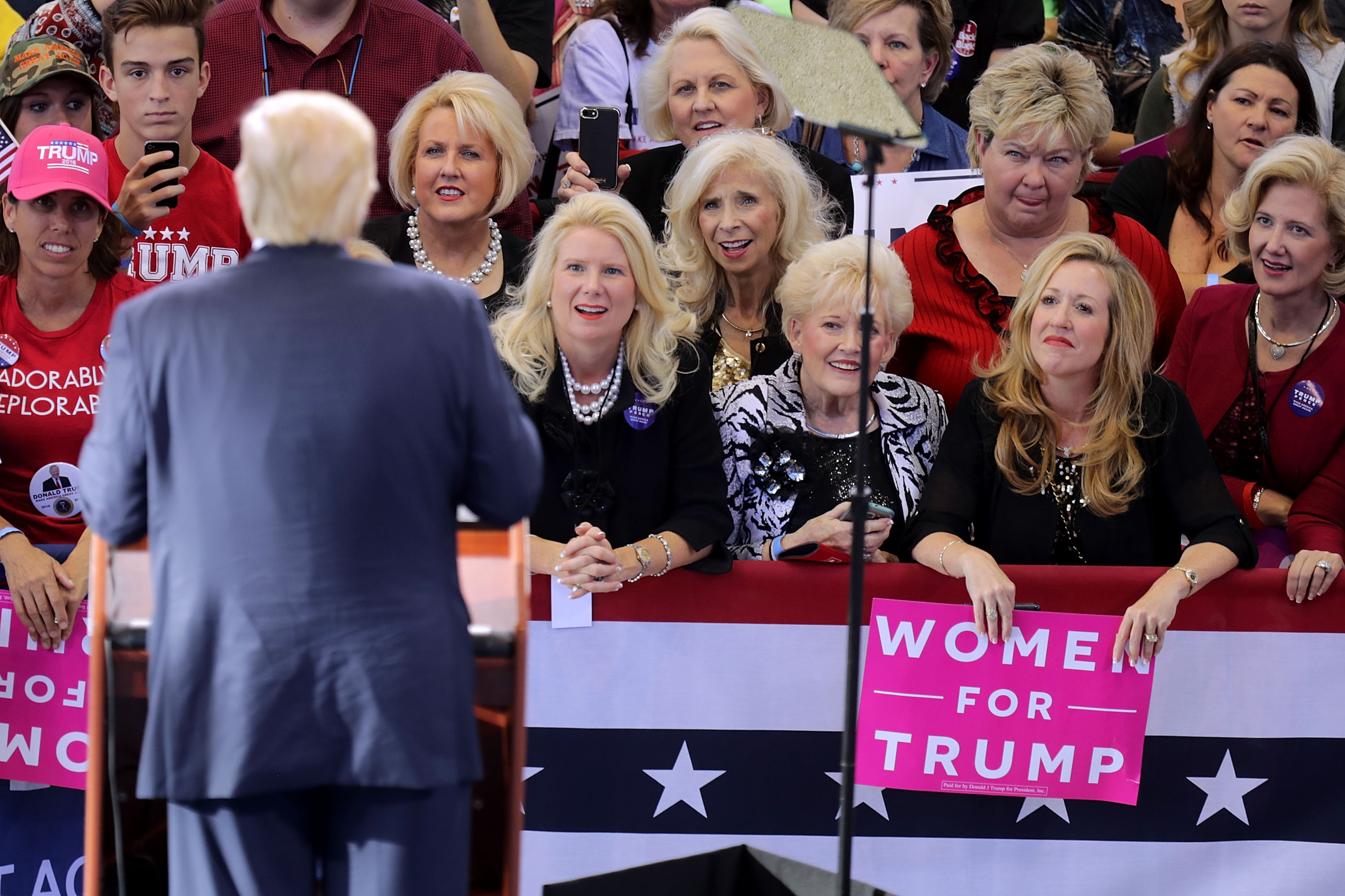
Women listen to Republican presidential nominee Donald Trump as he holds a campaign rally in Raleigh, North Carolina, on November 7, 2016. Chip Somodevilla / Getty Images
His manipulation almost worked again. Trump decisively won the rural vote, even though his trade wars and cuts to federal agricultural programs landed hard on farm country (though his administration directed nearly $30 billion toward farmers to insulate them from his trade policies). And despite the Trump administration’s utter indifference to public education and proposed cuts to rural education, which were beat back by fellow Republicans, Trump won two-thirds of white voters with no college degree.
The president became the latest master of one of America’s oldest forms of political puppeteering to disabuse the white poor, working class, and middle class of any notion of unity with their Black counterparts. Again a DuBois writing was prescient, saying that white elites, as they tore down Reconstruction after the Civil War, offered to the average white person a “public and psychological wage” of having privileges and life chances visibly better than those of Black people. This conscious creation of “inter-racial jealousy” led to Jim Crow laws and murderous white riots against Black businesses.
One notable modern moment where white people seemed to collectively realize the poverty of their psychological wage is during the opioid crisis. In the 1980s and ‘90s, when “drug wars” targeted Black people, the political and social remedy was massive mandatory prison sentences even for non-violent possession. In the wake of opioid overdose deaths doubling among white people between 2010 and 2017, soaring from 18,000 to 37,000 a year, Trump declared the epidemic a national emergency, calling for treatment, even for inmates.
Citing his alcoholic brother who died at 42, Trump voiced an empathy not heard in any other crisis. “Together, we will care for our citizens, our children, and our orphans,” the president said in a 2017 speech at the White House. “Together, we will face this challenge as a national family with conviction, with unity, and with a commitment to love and support our neighbors in times of dire need.”
What followed was a tiny decline in white opioid deaths in 2018, the first decrease in two decades. Meanwhile, Black and Latino overdose deaths continued to grow — and all overdoses are likely on the rise again with COVID-19-related unemployment and social isolation.
But even this tiny white pre-pandemic decline is enough proof to see what would happen if we finally summoned a semblance of conviction, unity, and commitment to fight the worst plague in a century and slow the permanent alteration of the planet. What would happen if we, as individuals, really did love our neighbors, and government was prepared to offer support in times of dire need?
Part of the answer is not waiting for an insane level of white death to summon a concerted response. Yet, if the current level of it due to COVID-19 was not sufficient for a majority of white voters to consider science deniers like Trump a mortal danger, then what would be?

Medical staff members prepare for an intubation procedure on a patient suffering from COVID-19 intensive care unit at the United Memorial Medical Center on November 19, 2020 in Houston, Texas. Go Nakamura / Getty Images
We may get some answers in the bleak COVID-19 winter ahead, with the virus in “uncontrolled spread” in every state except Hawaii as of Dec. 7, according to CovidExitStrategy.org. Many of the states where Trump ran up huge margins currently have the highest number of new cases per 100,000 residents. The nation now risks facing a total of 539,000 COVID-19 deaths by April 1, according to the University of Washington’s Institute for Health Metrics and Evaluation, or IHME.
As to whether we are anywhere close to a tipping point of white suffering from climate change, we don’t know exactly how many people of any demographic die in total from hurricanes, wildfires, floods, and severe storms. But when Hurricane Katrina killed more than 1,800 people in 2005 and devastated majority-Black New Orleans, about 800 victims in Louisiana were white, according to researchers from the CDC and the Louisiana Office of Public Health.
And a working paper published this summer by the National Bureau of Economic Research suggests that in a few decades we’ll reach a threshold where white people begin to feel the impacts of warming as acutely as people of color. Written by a 16-person international team in collaboration with the independent research organization Rhodium Group, it estimates that by 2100, mortality rates from a planet with an onslaught of extreme heat, wildfire smoke, insect-borne diseases, and the mental stress from flood and storm relocations will become comparable to cancer and infectious diseases.
One of the researchers, University of Chicago economics professor Michael Greenstone, said the continued growth of greenhouse gas emissions will result in temperature effects from climate change “five times deadlier than recent U.S. flu seasons.”
Our response the rest of the way against COVID-19 will foretell if we have the foresight to deal reckon with climate change. For instance, the IHME estimates that we could avoid 66,000 of the next 200,000 projected deaths through the simple act of universal face masking. If deaths occur across demographics at the same rate they have to date, that means saving another 37,000 or so — white lives enough to fill Boston’s Fenway Park.
But the mask itself — or the act of not wearing one — has become a symbol of whiteness.
A dozen Republican governors still do not have mandatory mask orders in place. And in some states that have Democratic governors, such as Wisconsin and Michigan, Republican-dominated legislatures are bitterly attacking mask orders and social-distancing limitations.
Most of the Republican governors who have recently issued mask orders have done so only after realizing the hard way that the political trashing of masks as an abridgement of liberty and personal freedom is selfish suicide. The latest is Wyoming’s Mark Gordon, who said, “Too many people have died,” after seeing a 33-fold rise in the 7-day average of cases between early September and late November and a record 27 deaths on Dec. 3.
Governor Doug Burgum of North Dakota waited until hospitals hit 100 percent capacity and health care workers were so overwhelmed from an 11-fold rise in cases since July that asymptomatic COVID-19-positive medical staff are staying on the job. A state that experienced no more than two COVID-19 deaths a day in July had a record 37 deaths on Nov. 24 and led the nation in cases per capita in late November.
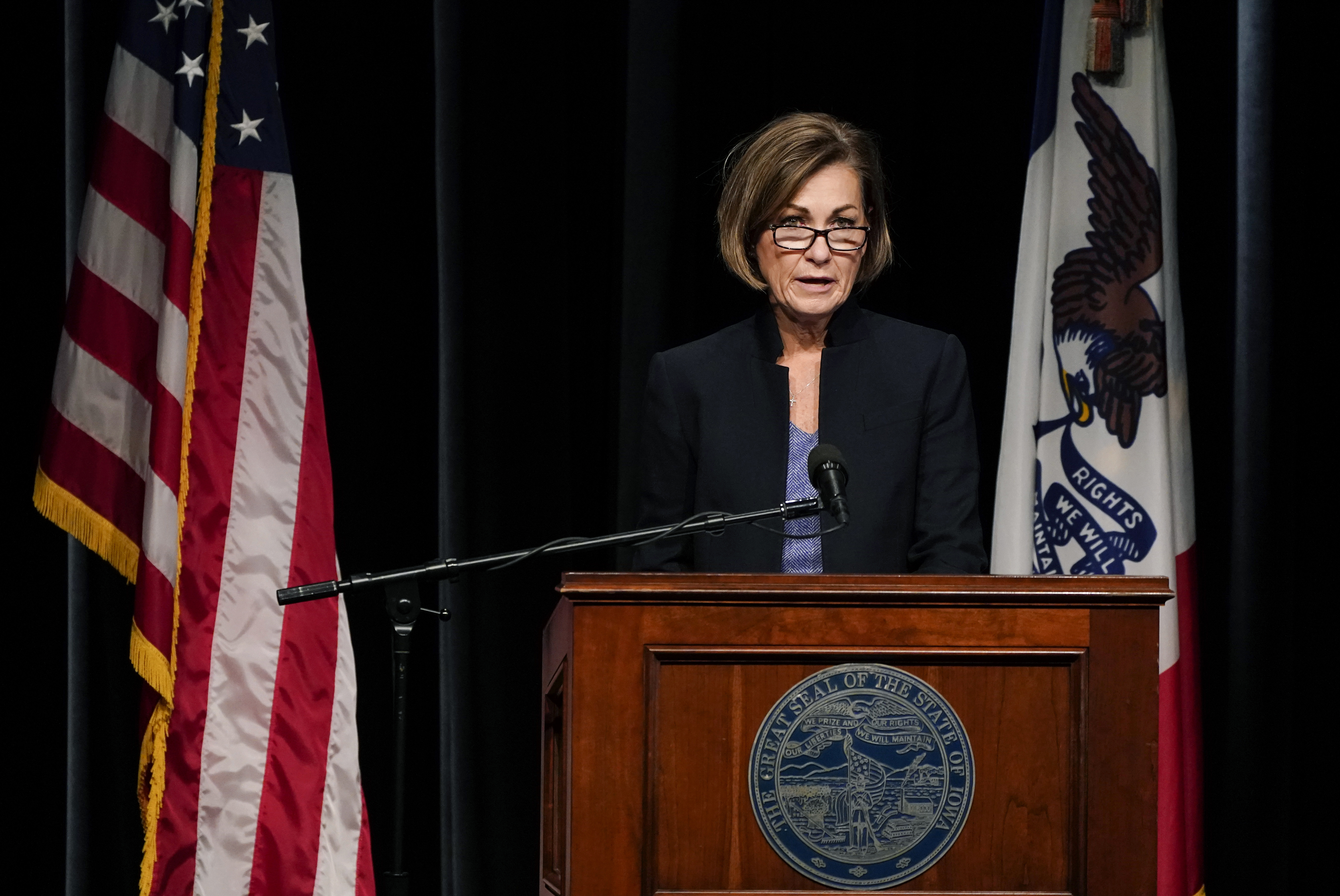
Iowa Governor Kim Reynolds updates the state’s response to the coronavirus outbreak during a news conference on November 19 in Johnston, Iowa. AP Photo / Charlie Neibergall
In Iowa, Republican Governor Kim Reynolds bizarrely announced two partial mask mandates in less than a week as COVID-19 case counts have risen 10-fold since July and daily deaths have increased from the summer’s single digits to a record 85 on Dec. 3. Having once mocked masks as a “feel good” measure, Reynolds first issued masking orders for large, planned organized indoor and outdoor “social” and “community” gatherings, such as wedding receptions. But masks were not mandated for normal church services or regular patronization of places like restaurants, bars, bowling alleys, casinos, BINGO halls, movie theaters, fitness centers, and shopping malls.
“You can still eat in a restaurant, you can still go to a movie, and work out at the gym — and in many states you can’t do that,” Reynolds said. “Iowa is open for business, and we intend to keep it that way.”
Under pressure from her state board of health, Reynolds trotted out another order with stiffer numerical limits for gatherings and receptions, but still exempted religious convenings, funerals, weddings, as well as bars and restaurants. Despite the CDC’s growing body of evidence of the protective nature of masks, she could not stop herself from undercutting the order, saying, “There’s science on both sides.”
Many of the governors in the remaining 12 states with no mask mandates reject them with a gusto that reflects the delusions health care workers are reporting hearing from their patients. In deep-red South Dakota, emergency room nurse Jodi Doering shared on Twitter recollections of COVID-19 patients who still don’t believe the virus is real and scream for magic medicine as they note that Joe Biden is going to ruin the country. “All while gasping for breath,” she wrote.
Doering’s governor is Kristi Noem, who secured her place in COVID-19 infamy by welcoming President Trump’s Fourth of July speech before a mask-less throng at Mt. Rushmore, as well as the 460,000-person Sturgis Motorcycle Rally, which resulted in nearly 30 counties in neighboring Minnesota having to deal with at least one COVID-19 case. Before South Dakota got hit by the virus, Noem crowed over the bodies piling up in blue states, saying, “Those governors just made the wrong decisions.”
South Dakota now has a 25-fold rise in cases since Independence Day and registered a record 54 fatalities on Nov. 28. Yet Noem will not issue a mask order, despite a recent recommendation to do so by Trump’s White House Coronavirus Task Force. Noem’s spokeswoman, Maggie Seidel, even lied outright about proven COVID-19 prevention methods, claiming, “The facts are simple: Mask mandates, harsh lockdowns, massive testing, and contact tracing haven’t worked — in the United States or abroad.”
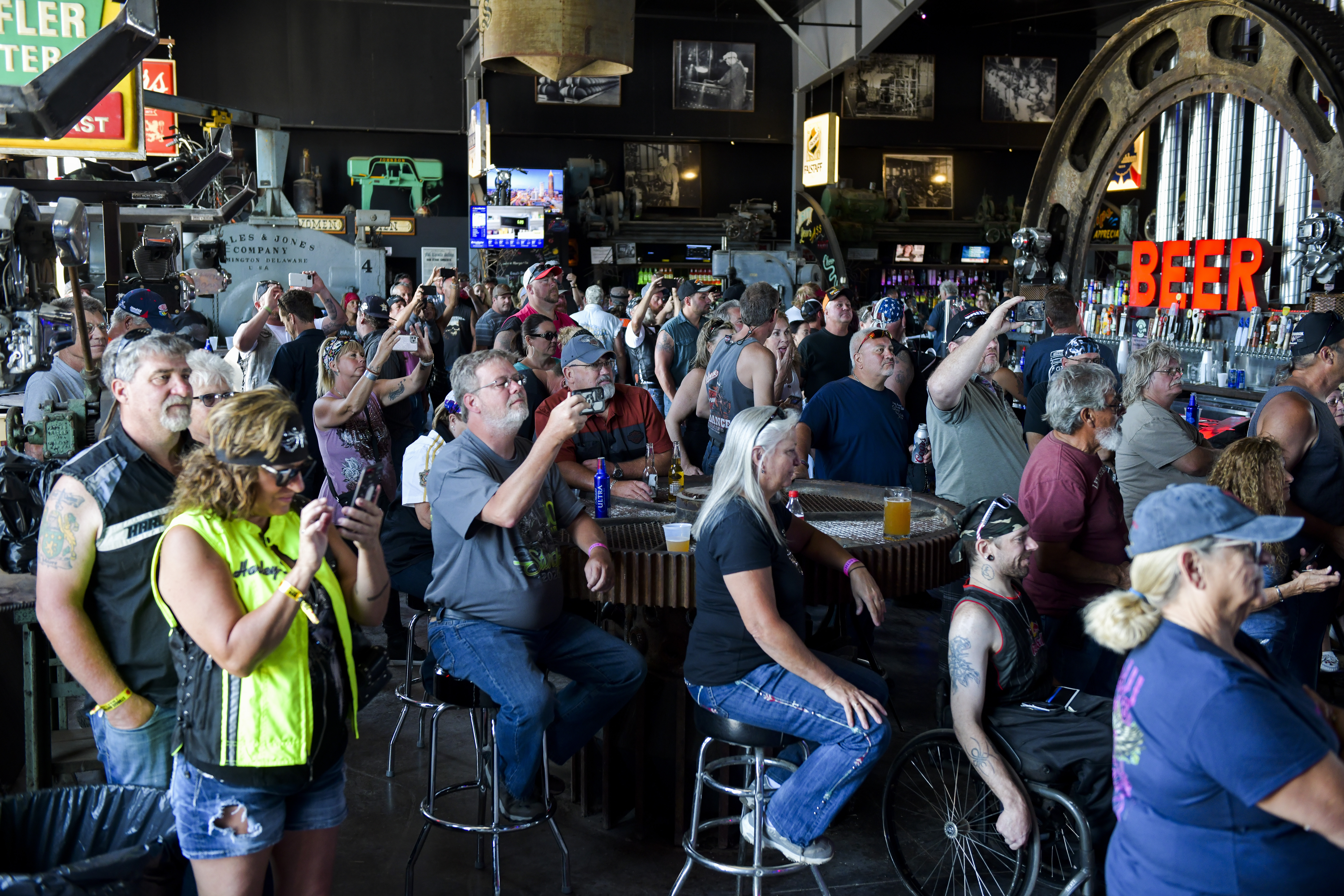
People watch a concert at the Full Throttle Saloon during the 80th Annual Sturgis Motorcycle Rally in Sturgis, South Dakota, on August 9, 2020. Michael Ciaglo / Getty Images
Instead of listening to science, leaders such as Noem and the majority of white voters remain in a self-imposed lockdown from facts. The pandemic has now killed more Americans than the atomic bombs the U.S. dropped on Japan during World War II. Yet a majority of white folks still chose the madman who dropped the COVID-19 bomb on them.
That fact does not inspire a whole lot of immediate hope of finding common ground on the issues that will remain after the vaccine, such as climate change, systemic racism, economic disparities, and gun violence.
This nation is so numb to its self-destruction that it was scarcely mentioned on the campaign trail that we’ve lost 652,000 Americans to firearms from 1999 to 2018, according to the CDC, with 474,000 of the victims being white. That is the equivalent of wiping out the entire municipality of Minneapolis. (Three-fourths of those deaths were from suicide.)
One glimmer of hope that there may exist a tipping point where science and sanity come to the rescue comes, perhaps surprisingly, from West Virginia. Despite Trump collecting nearly 70 percent of the votes in the state, Governor Jim Justice has thus far issued two mask orders. And in a plea unique among white governors in blazing red states, Justice bluntly asked his more-than-90-percent white constituency to separate politics from public health.
“I need you to quit believing in any way that somebody is going to come and take your guns or that it’s unconstitutional or whatever it may be,” Justice said. “Who cares about all that right at this moment? Right at this moment, all we need to do is to find some way to break the chain of this killer that’s eating us alive.”
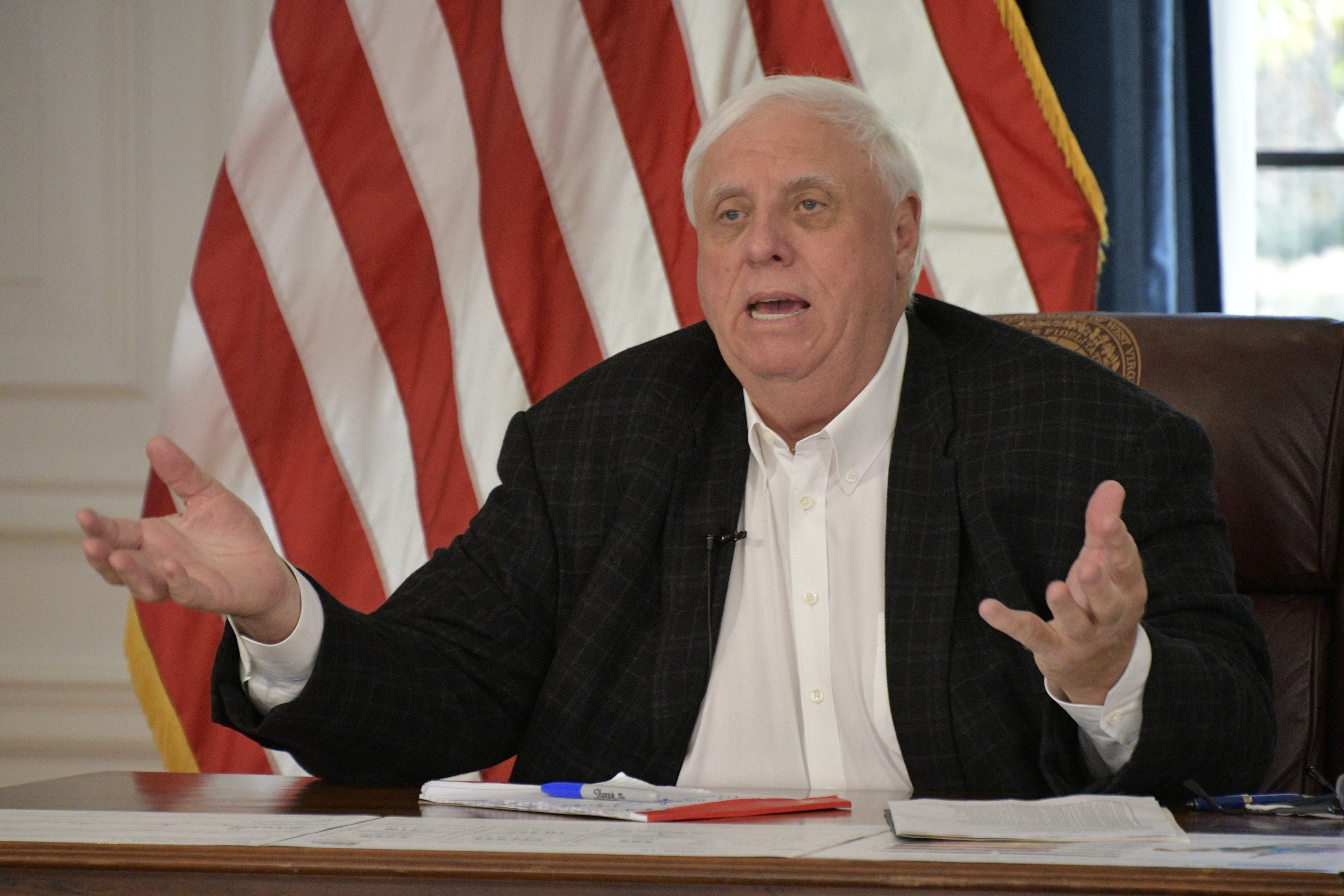
West Virginia Governor Jim Justice gives a press briefing on November 16, 2020, to discuss his statewide indoor face covering requirement. Courtesy Office of the West Virginia Governor
The nation awaits more white leaders who are willing to break the chain of all the epidemics that are eating this nation alive, not just in the momentary tragedy of COVID-19, but also in the long-term challenges of climate change, racial and economic disparities, and gun violence. It is the height of irony that when the Black Lives Matter movement arose, many white people reflexively shouted back that all lives matter.
All the while, the majority of white people still voted for a president whose policies devalue all life.
It will be a great day when a majority of white Americans realize that modern calamities can no longer be contained and that the psychological wage they have enjoyed no longer is a living wage. Governor Gordon of Wyoming said too many have died. It may have finally dawned on him in an state where 8 of 10 people are white, that 8 of 10 people dying from COVID-19 are also white.
But it took 285,000 deaths for governors like him to come around. The modern danger of the nation’s fantastic system of evasions, denials, and justifications — to borrow again from Baldwin — goes far beyond destroying white people’s grasp of reality. With COVID-19 today and climate change tomorrow, the system has now begun to destroy lives, all lives, on a scale this nation has never seen.
The views expressed here do not reflect any official organizational opinions or positions at Grist.
